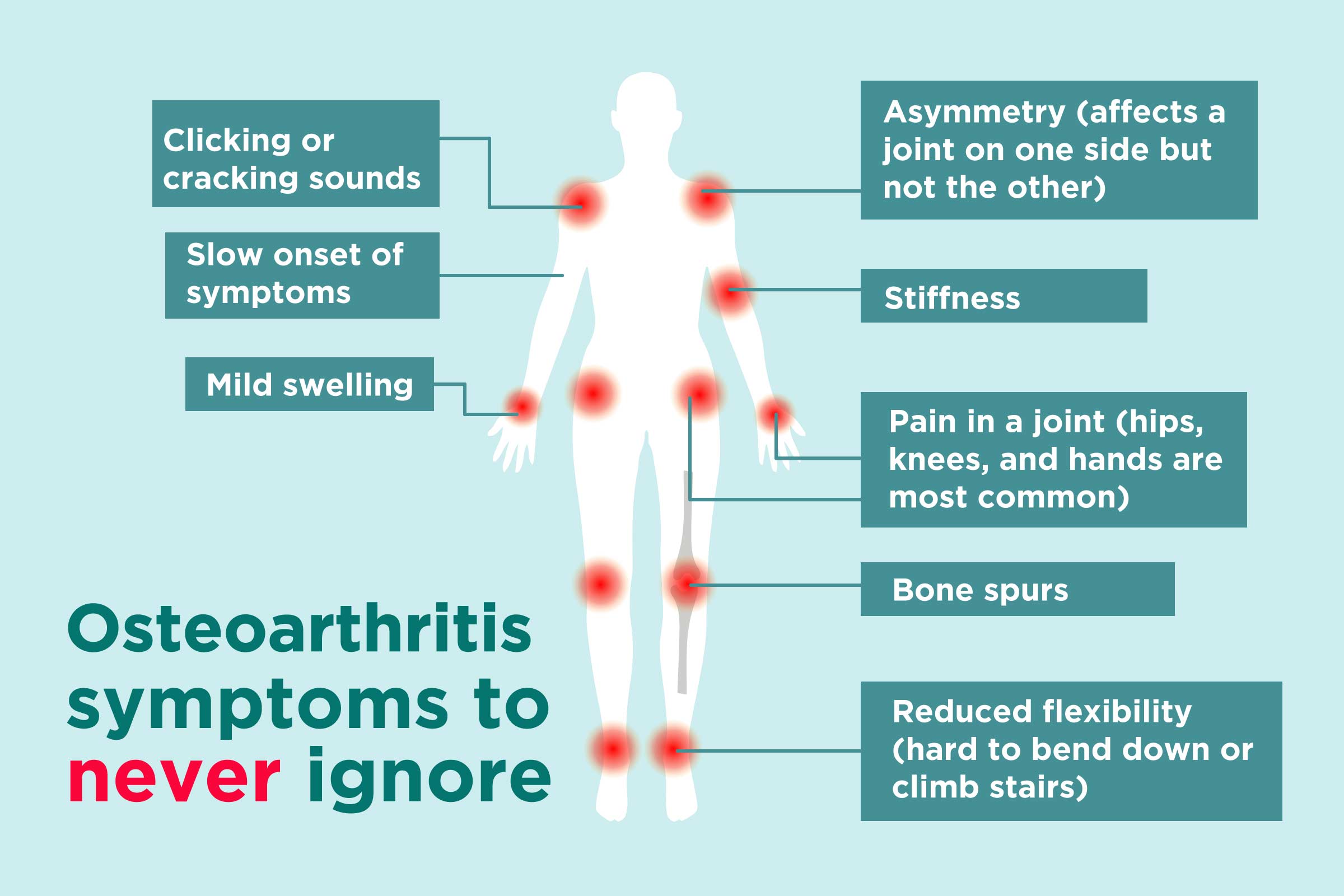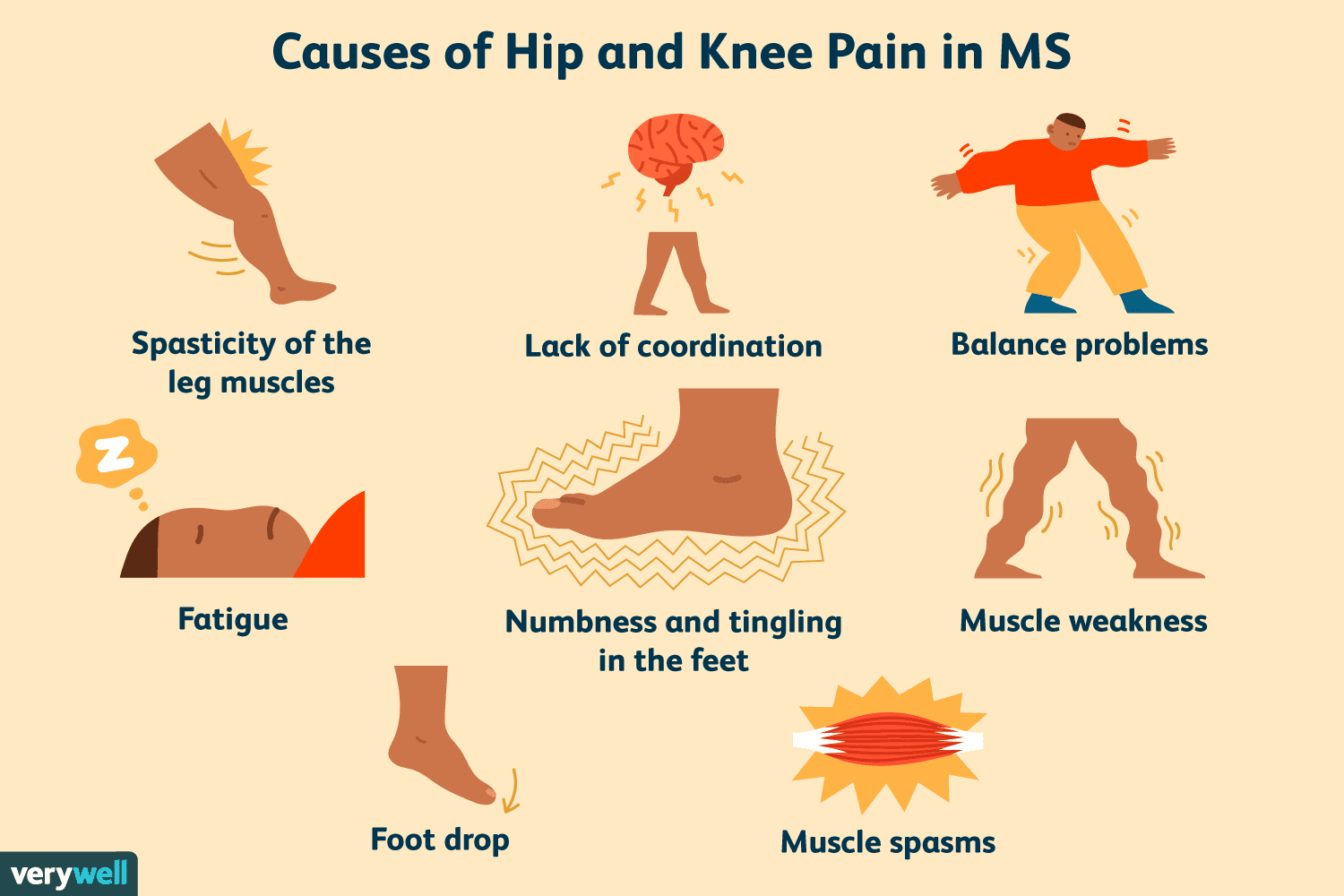Knee and hip pain on one side often results from injury or overuse. It may also indicate underlying medical conditions.
Experiencing knee and hip pain on one side can disrupt daily activities and affect your quality of life. Common causes include arthritis, bursitis, and muscle strains. Injuries, such as ligament tears or fractures, can also lead to localized pain. Overuse from repetitive activities or poor posture may contribute to discomfort.
Seeking medical advice is crucial for an accurate diagnosis and appropriate treatment. Early intervention can prevent the condition from worsening. Simple lifestyle changes, physical therapy, and medications often provide relief. Understanding the root cause helps in managing symptoms effectively and maintaining mobility.

Credit: creakyjoints.org
Introduction To Unilateral Knee And Hip Pain
Experiencing pain in your knee and hip on one side can disrupt your life. This type of pain, known as unilateral pain, often signals an underlying issue. It is crucial to understand the potential causes and effects on daily life.
Common Causes Of Asymmetrical Joint Pain
Several factors can contribute to asymmetrical joint pain. Here are some common causes:
- Injury – A fall or accident can lead to joint pain on one side.
- Arthritis – This can affect one joint more than the other.
- Bursitis – Inflammation of the bursae can cause pain.
- Tendinitis – Overuse of a tendon leads to pain in that area.
- Hip Labral Tear – A tear in the hip’s cartilage can cause pain.
- Gait Issues – An uneven walking pattern can lead to joint pain.
Impact On Daily Activities And Mobility
Unilateral knee and hip pain can significantly impact your daily activities. Simple tasks become challenging:
- Walking – Pain can make walking difficult.
- Sitting – Sitting for long periods becomes uncomfortable.
- Standing – Standing may aggravate the pain.
- Climbing Stairs – Stairs can be particularly troublesome.
- Exercise – Physical activity might worsen the pain.
Understanding these impacts helps in seeking appropriate treatment and improving quality of life.
Assessing Your Pain
Experiencing knee and hip pain on one side can be distressing. Understanding and assessing your pain is crucial. This helps you determine the necessary steps. Let’s explore how to evaluate your pain effectively.
When To Seek Medical Attention
Knowing when to visit a doctor is important. Here are some signs:
- Intense pain that limits daily activities
- Swelling and redness around the joint
- Fever or warmth in the affected area
- Sudden inability to bear weight
If you experience any of these symptoms, seek medical advice. Delaying can lead to complications.
Self-evaluation Of Pain Severity And Duration
Assessing pain severity and duration helps manage it better. Use a pain scale from 1 to 10:
| Pain Level | Description |
|---|---|
| 1-3 | Mild pain, manageable without medication |
| 4-6 | Moderate pain, may need over-the-counter pain relief |
| 7-10 | Severe pain, requires medical attention |
Also, consider how long the pain lasts:
- Acute Pain: Lasts for a few days to weeks
- Chronic Pain: Persists for months or longer
Track your pain in a diary. Note the intensity, duration, and activities that worsen it. This information is valuable for your doctor.
Immediate Relief Strategies
Experiencing knee and hip pain on one side can be debilitating. Immediate relief strategies can help manage discomfort and improve mobility. Here are some effective methods to alleviate pain quickly and efficiently.
Rest And Pain Management
Rest is crucial for healing. Avoid activities that strain your knee or hip. Use over-the-counter pain medications like ibuprofen or acetaminophen for relief. These medications reduce inflammation and pain.
- Take breaks throughout the day.
- Elevate your leg when resting.
- Use pillows to support your joints.
Cold And Heat Therapy
Cold and heat therapy can provide immediate pain relief. Use a cold pack for the first 48 hours to reduce swelling. Afterward, switch to heat to relax muscles and improve blood flow.
| Therapy | Benefits | Instructions |
|---|---|---|
| Cold Therapy | Reduces swelling and numbs pain. | Apply for 20 minutes every hour. |
| Heat Therapy | Relaxes muscles and improves circulation. | Apply for 20 minutes every 2 hours. |
Use these strategies to manage knee and hip pain effectively. Rest and proper care are essential for quick recovery.
Exercise And Stretching
Exercise and stretching play a crucial role in alleviating knee and hip pain on one side. Incorporating gentle movements can enhance flexibility, reduce stiffness, and strengthen the muscles around your joints. Below, we explore some effective exercises and stretches.
Gentle Yoga Poses For Hip And Knee
Gentle yoga can help ease pain in your hip and knee. These poses are easy to perform and highly effective.
- Child’s Pose: This pose stretches your hips and thighs.
- Cat-Cow Stretch: It helps to increase flexibility in your spine and hips.
- Bridge Pose: Strengthens your hips and glutes.
Perform these poses slowly and hold each for 15-30 seconds. Repeat 3-5 times for best results.
Strengthening Exercises For Joint Support
Strengthening exercises can provide essential support for your joints. Here are some simple exercises:
- Leg Raises: Strengthen your quadriceps and hip flexors.
- Hamstring Curls: Support your knees by strengthening the hamstrings.
- Wall Sits: Enhance the strength of your glutes and thighs.
Perform each exercise for 10-15 repetitions. Aim for 2-3 sets to see improvements.
Below is a table summarizing these exercises and their benefits:
| Exercise | Muscle Group | Benefits |
|---|---|---|
| Child’s Pose | Hips, Thighs | Stretches hips and thighs |
| Cat-Cow Stretch | Spine, Hips | Increases flexibility |
| Bridge Pose | Hips, Glutes | Strengthens hips and glutes |
| Leg Raises | Quadriceps, Hip Flexors | Strengthens quadriceps and hip flexors |
| Hamstring Curls | Hamstrings | Supports knees |
| Wall Sits | Glutes, Thighs | Strengthens glutes and thighs |
Lifestyle Modifications
Knee and hip pain on one side can disrupt daily life. Making small lifestyle changes can greatly reduce discomfort. Simple adjustments at home and work can make a big difference. Choosing the right footwear and using orthotic support can also help.
Ergonomic Adjustments At Home And Work
Ergonomic adjustments are key to managing knee and hip pain. Proper desk height and chair support are essential. Ensure your feet touch the floor while sitting. Use a footrest if needed. Keep your computer screen at eye level.
At home, avoid sitting for long periods. Take breaks to stand and stretch. Use cushions to support your lower back. Adjust your bed to a comfortable height. Use pillows to support your knees and hips while sleeping.
Footwear And Orthotic Support
Wearing the right shoes can ease knee and hip pain. Choose shoes with good arch support and cushioning. Avoid high heels and flat shoes without support. Consider orthotic inserts for extra support.
Orthotic inserts can help align your feet properly. This reduces stress on your knees and hips. Consult a podiatrist for custom orthotics if needed. They can make a big difference in pain relief.
| Adjustment | Benefit |
|---|---|
| Proper Desk Height | Reduces strain on knees and hips |
| Supportive Chair | Improves posture and comfort |
| Footrest | Ensures feet touch the floor |
| Good Footwear | Provides necessary arch support |
| Orthotic Inserts | Aligns feet and reduces stress |
:max_bytes(150000):strip_icc()/Knee-pain-56ddd0b25f9b5854a9f62098.jpg)
Credit: www.verywellhealth.com
Alternative Therapies
Knee and hip pain on one side can be very annoying. Many people seek relief through alternative therapies. These therapies can offer natural solutions. Here are two popular alternative therapies that help alleviate pain.
Acupuncture And Pressure Points
Acupuncture involves inserting tiny needles into the skin. These needles target specific pressure points. The goal is to balance the body’s energy. This can help reduce pain and inflammation.
Common pressure points for knee and hip pain include:
- GB34 – Located below the knee, on the outer leg.
- ST36 – Found below the knee, on the front of the leg.
- LI4 – Located on the hand, between the thumb and index finger.
Many people find relief after just a few sessions. Acupuncture can be a safe and effective option.
Massage And Myofascial Release
Massage therapy helps relax muscles and improve blood flow. This can reduce pain in the knee and hip. Myofascial release is a special type of massage. It focuses on releasing tightness in the fascia. Fascia is the connective tissue around muscles.
Benefits of massage and myofascial release include:
- Improved flexibility
- Reduced muscle tension
- Enhanced circulation
Regular sessions can lead to long-term pain relief. These therapies are non-invasive and natural.
Consider trying these alternative therapies to manage knee and hip pain. They might provide the relief you need.
Nutrition And Supplementation
Nutrition plays a crucial role in managing knee and hip pain on one side. The right dietary choices can help reduce inflammation, support joint health, and improve overall well-being. This section delves into the importance of nutrition and supplementation for alleviating pain and promoting joint health.
Anti-inflammatory Foods
Consuming anti-inflammatory foods can significantly reduce joint pain. These foods help combat inflammation in the body.
- Fatty Fish: Salmon, mackerel, and sardines are rich in omega-3 fatty acids.
- Leafy Greens: Spinach, kale, and collard greens contain antioxidants and vitamins.
- Fruits: Berries, oranges, and cherries are high in vitamins and antioxidants.
- Nuts and Seeds: Almonds, walnuts, and chia seeds are great sources of healthy fats.
- Olive Oil: Extra virgin olive oil contains oleocanthal, a compound with anti-inflammatory effects.
Vitamins And Minerals For Joint Health
Certain vitamins and minerals are essential for joint health. They support cartilage repair and reduce inflammation.
| Vitamin/Mineral | Benefits | Sources |
|---|---|---|
| Vitamin D | Supports calcium absorption and bone health. | Sunlight, fortified milk, and fish liver oil. |
| Vitamin C | Promotes collagen production for cartilage repair. | Citrus fruits, strawberries, and bell peppers. |
| Calcium | Essential for strong bones and joints. | Dairy products, leafy greens, and fortified foods. |
| Magnesium | Helps with muscle and nerve function. | Nuts, seeds, and whole grains. |
| Omega-3 Fatty Acids | Reduces inflammation and joint pain. | Fatty fish, flaxseeds, and walnuts. |
Incorporating these nutrients into your diet can help manage knee and hip pain. It is essential to maintain a balanced diet for overall joint health.

Credit: www.joionline.net
Long-term Management
Managing knee and hip pain on one side requires a comprehensive approach. Long-term management ensures pain relief and improved mobility. It’s crucial to have a personalized plan that adapts over time.
Developing A Personalized Pain Plan
A personalized pain plan addresses individual needs and circumstances. This plan should include:
- Regular exercise routines
- Medication schedules
- Dietary changes
- Physical therapy
Consult a healthcare provider for tailored recommendations. They can assess your pain and suggest specific treatments. Regular updates to the plan ensure it remains effective.
Monitoring And Adjusting Treatments Over Time
Regular monitoring helps track progress and identify any issues. Keeping a pain journal can be useful. Note down:
- Intensity of pain
- Activities causing pain
- Effectiveness of treatments
This information helps your doctor adjust treatments as needed. Adjustments may include:
- Changing medication doses
- Introducing new therapies
- Modifying exercise routines
Consistent communication with your healthcare provider is essential. It ensures that your pain management plan remains effective and suitable for your condition.
Table: Key Components Of A Personalized Pain Plan
| Component | Description |
|---|---|
| Exercise | Regular, low-impact activities |
| Medication | Pain relievers and anti-inflammatory drugs |
| Diet | Foods that reduce inflammation |
| Therapy | Physical and occupational therapy sessions |
Following these steps can help manage knee and hip pain effectively. A well-rounded plan ensures long-term relief and better quality of life.
When To Consider Surgery
Experiencing knee and hip pain on one side can be debilitating. Sometimes, medication and physical therapy aren’t enough. Knowing when to consider surgery is crucial for long-term relief and mobility.
Indications For Surgical Intervention
Surgery may be necessary when:
- Severe pain affects daily activities and sleep.
- Non-surgical treatments have failed.
- The joint is severely damaged by arthritis or injury.
- Imaging shows significant joint deterioration.
Doctors may recommend surgery if these criteria are met. Surgery aims to restore function and reduce pain.
Recovery And Rehabilitation Post-surgery
Post-surgery recovery involves:
- Initial rest and limited movement.
- Physical therapy to regain strength.
- Gradual increase in activity levels.
Recovery times vary based on the type of surgery and individual health. Most people can resume normal activities within a few months.
Rehabilitation includes:
- Exercises prescribed by a physical therapist.
- Regular follow-up appointments.
- Adhering to a balanced diet to support healing.
| Phase | Activity | Duration |
|---|---|---|
| Initial Recovery | Rest and limited movement | 1-2 weeks |
| Physical Therapy | Strength and flexibility exercises | 6-12 weeks |
| Full Recovery | Gradual return to normal activities | 3-6 months |
Commitment to recovery plans is essential. Following medical advice ensures the best outcomes.
Frequently Asked Questions
Why Does My Hip And Knee Hurt On One Side?
Hip and knee pain on one side can result from arthritis, bursitis, or muscle strain. Poor posture or overuse may also contribute. Consult a doctor for an accurate diagnosis and treatment plan.
Can Hip And Knee Pain Be Connected?
Yes, hip and knee pain can be connected. Issues in one joint often affect the other due to compensation.
How Do You Treat Hip And Knee Pain In One Leg?
Treat hip and knee pain in one leg with rest, ice, physical therapy, and over-the-counter pain relievers. Consult a doctor for persistent pain.
When Should I See A Doctor For Knee And Hip Pain?
See a doctor if knee or hip pain persists for more than a week, worsens, or limits daily activities. Seek medical advice if you experience swelling, redness, warmth, or significant discomfort. Immediate attention is needed for sudden, severe pain or inability to bear weight.
Conclusion
Addressing knee and hip pain on one side is crucial for overall health. Seek medical advice and explore treatment options. Regular exercise, proper posture, and weight management can help. Early intervention can prevent further complications. Prioritize your well-being and take proactive steps to alleviate pain.
Live a healthier, pain-free life.
<script type="application/ld+json">
{
"@context": "https://schema.org",
"@type": "Article",
"mainEntityOfPage": {
"@type": "WebPage",
"@id": "https://yoursoulhealth.com/knee-and-hip-pain-on-one-side/"
},
"headline": "Knee And Hip Pain on One Side: Quick Relief Tips",
"description": "Knee and hip pain on one side often results from injury or overuse. It may also indicate underlying medical conditions.",
"image": "https://yoursoulhealth.com/wp-content/uploads/2024/07/knee-and-hip-pain-on-one-side-1024x683.png",
"author": {
"@type": "Person",
"name": "Tanshir Bhuiyan",
"url": "https://yoursoulhealth.com/author/admin/"
},
"publisher": {
"@type": "Organization",
"name": "YourSoulHealth",
"logo": {
"@type": "ImageObject",
"url": "https://yoursoulhealth.com/wp-content/uploads/2024/05/Soul-Health-Without-bg.png"
}
},
"datePublished": "2024-09-02"
}
</script>
I am a health writer and blogger based in the US and UK. I have been with the health department for six years. And I give advice on various health problems and solutions. I have a lot of experience in health matters and I share it here.

